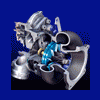Diffusore (o Estrattore) vs Alettone
-
Contenuti simili
-
ZENVO TSR-S ACTIVE REAR WING 1 2
Pubblicato da CarBreathing,
- zenvo
- alettone mobile
- (e 5 altri in più)
- 10 risposte
- 4514 visite
-
Se un'auto da 100cv fa 200 km/h perché una da 200... 1 2 3 4 6
Pubblicato da X82,
- aerodinamica
- bugatti veyron
- (e 6 altri in più)
- 53 risposte
- 19270 visite
-
Aerodinamica: appendici e carenature 1 2 3 4 7
Pubblicato da Giò,
- aerodinamica
- appendici aerodinamiche
- (e 3 altri in più)
- 64 risposte
- 29350 visite
-
-
-










.thumb.jpg.902d2a4f20a129e92b6f6920407b81bd.jpg)

.thumb.jpg.46228d717c405acd43b45b79fddce6a4.jpg)













Messaggi Raccomandati:
Crea un account o accedi per lasciare un commento
Devi essere iscritto per commentare e visualizzare le sezioni protette!
Crea un account
Iscriviti nella nostra community. È facile!
Registra un nuovo accountAccedi
Sei già registrato? Accedi qui.
Accedi Ora